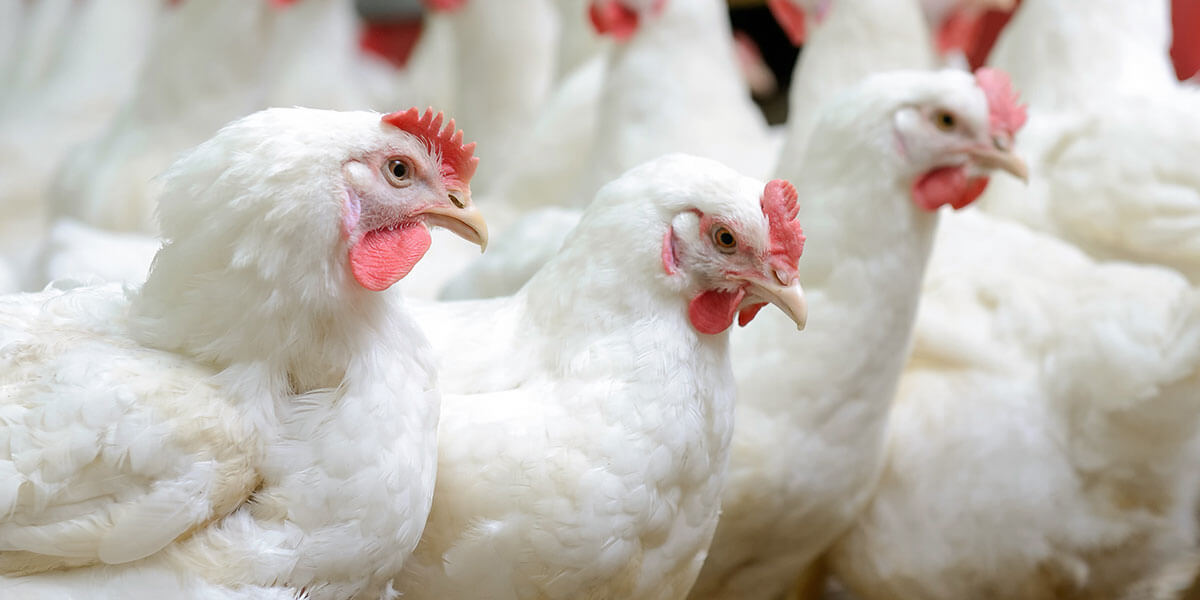This is part 3 of a 4-part series on strengthening epithelial tissue in poultry. Other articles in this series include Strengthen Epithelial Tissue Function in Poultry Production with Performance Trace Mineral Supplements, Improve Epithelial Tissue Function to Inhibit Bacterial Chondronecrosis and Osteomyelitis in Poultry Production, and How to Maintain Proper Epithelial Tissue Function to Ensure Poultry Food Safety.
Weak Epithelial Tissue Can Cause BCO and Other Poultry Diseases
When a bird’s epithelial tissue is weakened, bacteria and other antigens can pass into the body. This can lead to several health conditions – including bacterial chondronecrosis and osteomyelitis (BCO). This condition occurs when harmful bacteria in the bloodstream settle in microfractures between growth plates and the articular cartilage of the femur, tibia and flexible thoracic vertebrae, leading to micro-abscesses and necrosis.
BCO is the most common cause of lameness in poultry around the world, especially in flocks that aren’t treated with antibiotics. Financial losses from BCO range from 1% to 3% in normal conditions, or as high as 10% to 15% in extreme cases, impacting culling, slower growth and condemnation.
Read more: BCO in Poultry – How Much Is It Costing Your Operation?
Bacteria are the dominant organisms of the world, even more so than humans. Many species of bacteria cause BCO, but most frequently found are those that are familiar to poultry producers and consumers alike, including Enterococcus ssp., E. cecorum, Staphylococcus spp. and S. agnetis among others. There are reports on recovering Salmonella from bones. These bacteria can break through the epithelial tissue, survive the inflammatory and immune responses and eventually be deposited in remote places where the presence of immune cells and phagocytes are limited, irrigation is reduced, or vascular epithelium is weak.
The first step to delaying the onset and reducing the prevalence of BCO in poultry flocks is to improve the integrity of the first line of defense: the epithelial tissue.
What is the Role of Epithelial Tissue?
The epithelial tissue covers the body on the outside and the inside of tubular organs. It includes skin and epithelial lining in the gastrointestinal tract, respiratory system, reproductive system and others, even vascular endothelium covering the blood vessels. The epithelial tissue is a solid wall with cells attached by tight junctions. These cells are continuously being renewed, and some of them produce mucus and protective secretory components. When these cells are damaged by stress, parasites or bacteria, they must be replaced right away to maintain the integrity of the epithelium and ensure that these parasites cannot penetrate the body.
Therefore, these cell proteins need to be synthesized continuously. If there is not an adequate pool of new epithelial cells to immediately replace those that are damaged, bacteria will have an opportunity to enter the bloodstream.
Trace minerals, like zinc, manganese and copper, are critical to the production and maintenance of epithelial tissues. Tight junction proteins like ZO1, ZO2, claudin and occluding, require zinc for their synthesis. To maintain a protective layer and cellular structure, epithelial cells contain a cytoskeleton matrix composed of collagen and keratin filaments or tightly wrapped protein fibers. Keratin’s primary role is to make skin a pliable, insoluble and unreactive barrier against the natural environment. Zinc is a key mineral in the process of keratinization.
Enhance Epithelial Tissue Function with Trace Mineral Supplements
The trace minerals in Availa®ZMC — zinc, manganese and copper — improve gut integrity by strengthening the tight junctions in the intestine so bacteria won’t leak out and settle into microfractures in the growth plates. These minerals also help improve bone quality and the overall health and immune function of the birds.
Read more: BCO Lameness in Chickens: The Tip of an Iceberg
A research study conducted at the University of Arkansas using a strict challenge model resulted in a significant reduction in the prevalence of BCO lameness and delayed the incidence by four to five days. Birds fed Availa-ZMC in wire flooring models experienced a 29% reduction of BCO lameness. And birds fed Availa-ZMC in a litter flooring model exposed to Staphylococcus agnetis, showed a 23% reduction in lameness. There was also a reduction in severity of tibial and femoral head necrosis. This is largely due to the improvement performance trace minerals provide to the epithelial cells.
Proper Epithelial Tissue Function Can Reduce Bacterial Chondronecrosis and Osteomyelitis in Poultry
Ensuring a strong epithelial barrier is the essential first step to reducing the prevalence of BCO in your poultry flock. If you can ensure that birds have an adequate pool of new fully functional cells to replace those damaged by bacteria, you will be able to keep those bacteria from entering their bloodstream.
To learn more about formulating your poultry nutrition program to improve epithelial integrity and prevent BCO, contact your Zinpro representative today.

